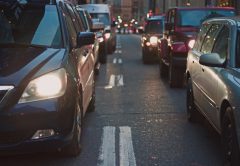Car manufacturers are testing their autonomous vehicle technology globally – soon they will be able to do so on the public roads of Japan. Testing areas for self-driving vehicles are emerging all over the world, even within public traffic zones like the motorway A9 in Germany and areas in certain US federal states. Japan wants to catch up and is setting up public areas for autonomous vehicle testing.
Testing in Simulators
In order to verify autonomous vehicle safety you need testing kilometers. A lot. According to a RAND study it needs billions of testing kilometers in the real world to prove vehicle safety. That’s why the industry is looking for alternative testing methods. Lately researchers from the University of Michigan extrapolated the most important traffic situations to test them in a simulator with all relevant weather conditions.
Public Tests in Japan
Nevertheless many manufacturers count on real world tests in order to cope with regional specifics like road signs and traffic rules. In Japan, cars drive on the left side of the road, only to name an example. So far the Japanese government focused on special testing areas isolated from public traffic. But in light of the summer Olympics in Tokyo in 2020 the government launched a project involving fully automated transport services. An agenda was presented in cooperation with the police.
Conditions for a Testing License in Japan
In order to test and learn under realistic conditions the first plans were developed in February and then published. The public should evaluate the guidelines before hard rules for testing would be formulated. A very important rule: To get the testing license for public traffic the autonomous cars have to be examined by the police. Latter checks if technical requirements are met and takes a test drive. The vehicle has to maintain contact with the testing company at all time and can be controlled remotely by a human driver. The person doesn’t need to sit inside the car all time. The driver’s rights and obligations are the same as with a traditional car. They must have valid driving license.
Routes and Residents
Several routes are excluded from the testing program. Autonomous testing is also prohibited if the traffic density is getting too high at certain periods of the day. Residents have to be informed if tests are planned in their neighborhood. License allocation is also undertaken by the Japanese police. A license is always assigned to one vehicle and valid for half a year.
About the author:
David Fluhr is journalist and owner of the digital magazine “Autonomes Fahren & Co”. He is reporting regularly about trends and technologies in the fields Autonomous Driving, HMI, Telematics and Robotics. Link to his site: http://www.autonomes-fahren.de




